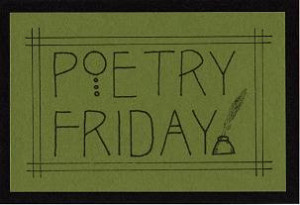 On a walk in the woods on Monday, I stumbled upon this surprise–a gargoyle tucked into the base of a tree. I posted about my walk (here) and several commenters noted that they thought the gargoyle photo worthy of a poem. Ever ready for a new idea, I started writing and also dipped into a little research.
On a walk in the woods on Monday, I stumbled upon this surprise–a gargoyle tucked into the base of a tree. I posted about my walk (here) and several commenters noted that they thought the gargoyle photo worthy of a poem. Ever ready for a new idea, I started writing and also dipped into a little research.
One of my delights in writing is the discovery of new information from side-research. This time I learned that I actually hadn’t seen a gargoyle! The word, gargoyle, originates from the French word for throat, gargouille. I discovered that gargoyles are technically associated with diverting water from buildings, serving as water spouts. Thus, this figure, solely decorative in nature, would more appropriately be called a grotesque. Who knew!? There are different views on the purpose of these elaborate carvings. Some hypothesize that gargoyles and grotesques were supposed to be reminders of the evil to be found outside church walls, a potent visual for illiterate churchgoers. Others believe that gargoyles were more protective in nature–present to fight off evil spirits or creatures. Much to my surprise, gargoyles were not without detractors. I was fascinated by this quote from St. Bernard of Clairvaux who was a well-known opponent of gargoyles in the 12th century. I was particularly delighted by his final pragmatic line, which, to me, sounds quite contemporary, and thoroughly exasperated as well.
“What are these fantastic monsters doing in the cloisters before the eyes of the brothers as they read? What is the meaning of these unclean monkeys, these strange savage lions, and monsters? To what purpose are here placed these creatures, half beast, half man, or these spotted tigers? I see several bodies with one head and several heads with one body. Here is a quadruped with a serpent’s head, there a fish with a quadruped’s head, then again an animal half horse, half goat… Surely if we do not blush for such absurdities, we should at least regret what we have spent on them.”[wikipedia]
At any rate, before realizing this creature was a grotesque, not a gargoyle, I had already begun writing. So, here’s the photo and my technically inaccurate effort. I’m not 100% satisfied with it yet, but it’s been a fun process.

The Gargoyle in the Woods
Settled in his sylvan lair
with a discontented air
Do you see him lurking there?
The gargoyle in the woods.
Living wood creates his bower
Gilded leaves upon him shower
yet he grows grimmer by the hour
The gargoyle in the woods.
What enchantment holds him here
Far from masonry and peer
Blind to nature’s atmosphere?
The gargoyle in the woods.
When darkness falls, does he arise,
raise clenched fists to stony skies
fill night-time air with bitter cries?
The gargoyle in the woods.
Molly Hogan (c)2016
Head on over to Irene Latham’s blog, Live Your Poem. She’s hosting Poetry Friday Roundup and you’re sure to discover some treasures there!
Hmmm… now that I’ve read your post, Molly, I’m wondering if I was told the difference between gargoyles and grotesques before. It sounds vaguely familiar, though I probably will forget again, since in my mind they will all be gargoyles. We have one named Clooney protecting our house. I think the tone and style of your poem is most fitting for such a noble creature! Well done!
LikeLiked by 1 person
I love that you have a protective gargoyle! Thanks for stopping by.
LikeLike
I always end up researching something, even when writing the shortest of poems. I’m happy to see I’m not alone!
LikeLiked by 1 person
There’s so much to investigate, right? One of the things that surprised me once I started writing regularly was how often I needed to know something more or wondered something and then stopped to research, and then how rewarding I found that process.
LikeLike
I’ve never even heard of a grotesque! Thank you for the education. And it’s still a great poem (love that repeating line) even if it wasn’t actually a gargoyle. Thank you for sharing!
LikeLiked by 1 person
And the really excellent thing is, if you ever decide to go with grotesque, it works, too! 🙂
LikeLiked by 1 person
What unusual find – both the carving and the poem!
LikeLiked by 1 person
Love the Poe-esque feel of your stanzas, Molly–the 2nd in particular. I don’t think for young American audiences you need quibble over gargouille vs. grotesque, but it is always fascinating to learn other than what you thought you knew, right?
LikeLiked by 1 person
A little bit of trivia to tuck away 🙂
LikeLike
It is a wonderful photo. I’m glad you wrote a poem to elevate the surprising find even higher.
LikeLiked by 1 person